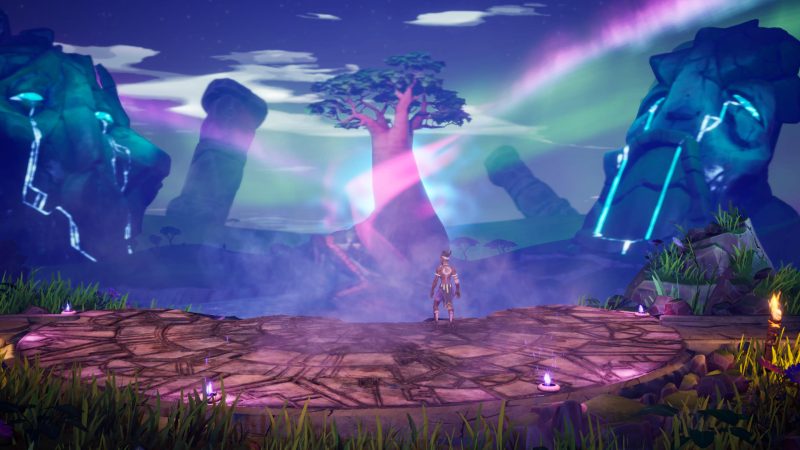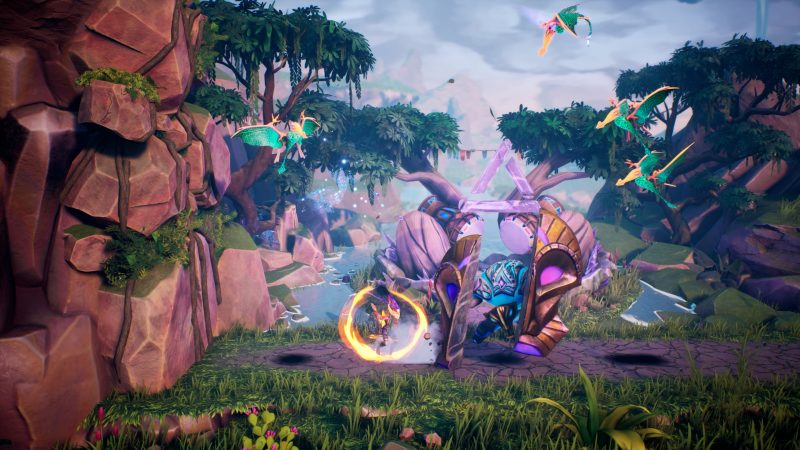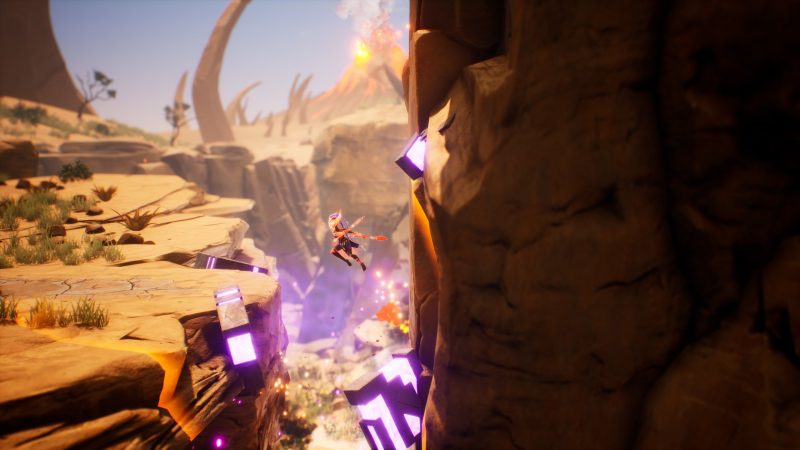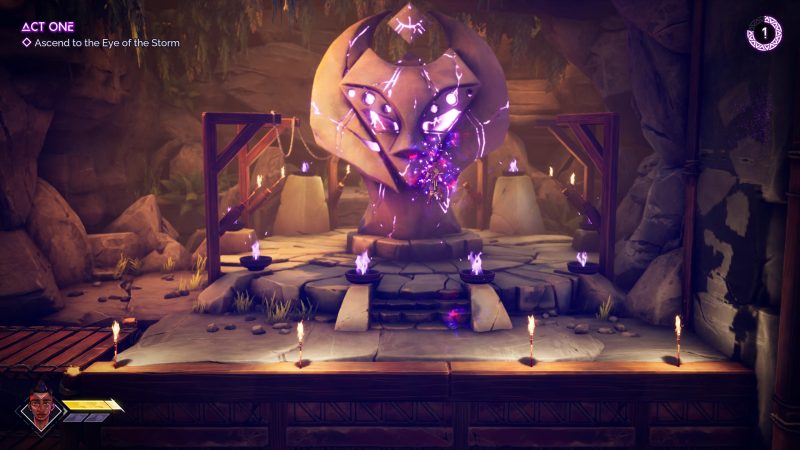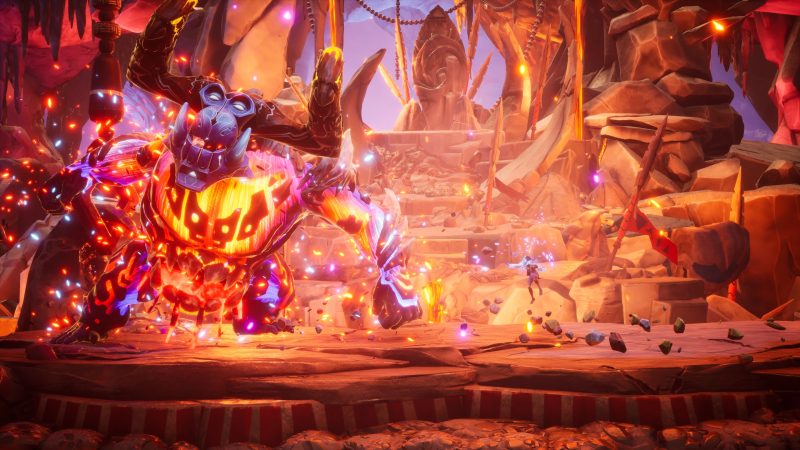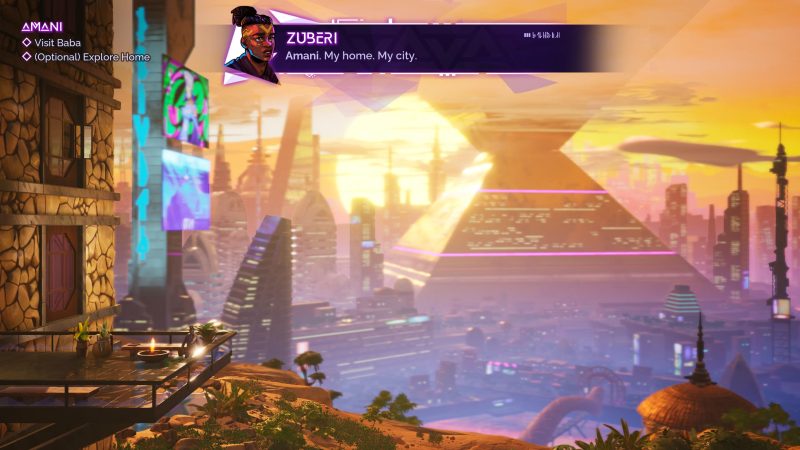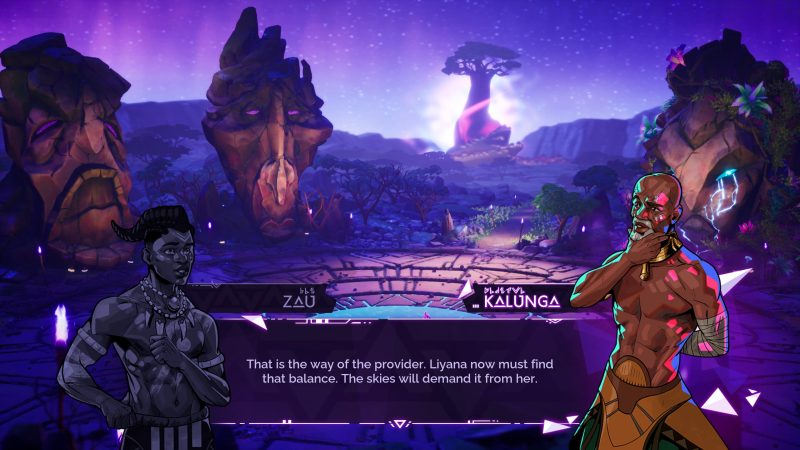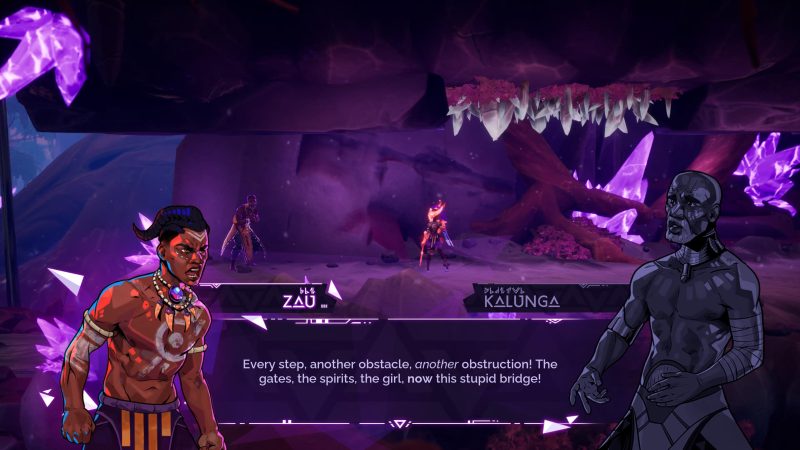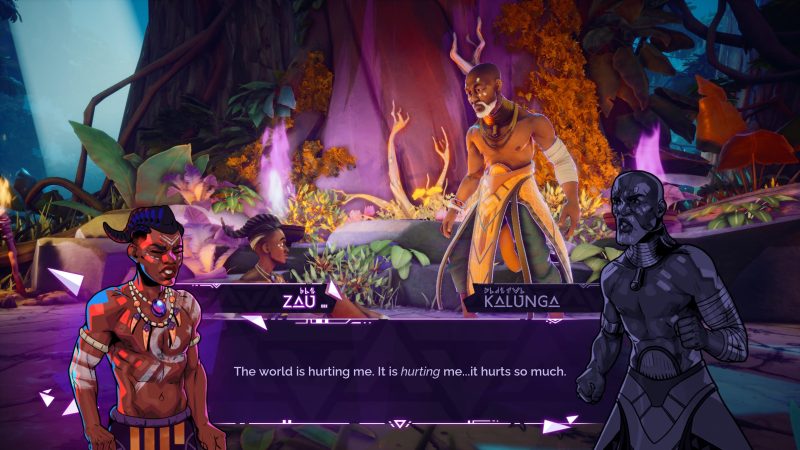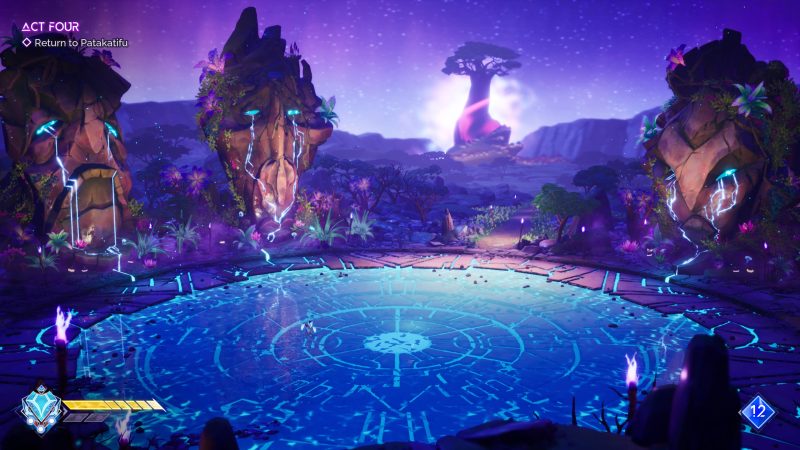Tales Of Kenzera: ZAU Review (PS5) – As a debut title for indie team Surgent Studios, 2D platformer Tales Of Kenzera: ZAU is kind of a big risk.
Firstly, platformers – good platformers – are really difficult to make. Platformers are some of the oldest kinds of games, but to make one that really sings takes a lot more than you might think.
Second, it’s not just a linear platformer, but a Metroidvania, meaning your character is grabbing upgrades that open up new, previously unavailable paths throughout the story, and there’s a fair amount of exploration and backtracking to deal with. It also means Tales Of Kenzera: ZAU is entering a crowded genre, trying to stand out against some of the best games ever made, not just best in their genre.
So not only have Surgent Studios chosen a difficult-to-execute game to make for its first outing, it’s also putting itself next to giants of gaming such as the genre’s namesakes.
However, Tales Of Kenzera: ZAU (which I’ll be calling ZAU for short) mitigates this risk the best way it can. By sticking to tried-and-true tropes of action platformers, and most importantly, by distinguishing itself with rich, well-written, well-voiced characters, and a heartfelt narrative that makes ZAU more than worth playing.
The result is a softer than I might’ve preferred Metroidvania, with an exceptionally strong story.
Tales Of Kenzera: ZAU Review (PS5) – A Soft Metroidvania With A Strong Story
Soft, Shallow, Yet Effective
In the lead up to my reviewing ZAU, every time I heard about the game, I was reminded of how it’s such a deep, personal story for Abubakar Salim. A game that in its entirety was a way for Salim to process the death of his father, and the lifelong process that is learning to be okay with those we’ve lost, and carry them with us.
I want to get into all that, but first I want to talk about what the core gameplay of ZAU is, which is that it’s an action-platformer. I’ve been saying Metroidvania, but when it comes down to it the truth is that exploration isn’t really core to the experience.
The combat is much more in focus, as is the actual platforming. These are the things you’ll be doing much more of over exploring, because when you enter a new area, pretty much the whole map is revealed to you.
When you look at the map closely, it’s clear that there’s an artistic reason for why it’s all there. You can recognize landmarks like the tree’s where Zau (that’s you) reflects on a time with his father, and your health gets permanently increased, drawn out for you.
You can’t put a marker on it, but you can open the map and easily begin to figure out how to get there. Which is a good example of how ZAU, sometimes to its detriment, chooses design over functionality.
The entire map actually, is a good example of how ZAU takes a shallow approach to most of its gameplay. The big, extensive map that’s core to most Metroidvania experiences is here, but also not really. Yes, it’s an extensive, moderately-sized map, but the fact that you can see all of a new area right away is what makes it a shallow use of a Metroidvania pillar.
ZAU’s combat flows between two styles, melee and ranged with the Sun and Moon masks respectively. You have light, heavy, and special attacks, along with an ultimate ability for each. Some enemies have shields that are more effectively depleted by using either the Sun or Moon mask.
You’ll learn to manage how you switch back-and-forth between masks, target some problem enemies first and deal with the rest as you can. For anyone who’s played practically any other action-platformer, even just any other action game, this will all feel familiar.
The double-jump, dash, and wall-jump movement options you have from the start along with the two combat styles help keep combat dynamic, at least for the first little while.
Unfortunately there’s little enemy variety, and the lack of any block/parry functionality beyond one ability to deflect projectiles means you’re running around a combat arena for half the time just trying to isolate and dispatch enemies as effectively as you can.
When the latter part of the game makes combat even more intense, it just feels tedious by that point, as you’re constrained from ever really finding your own play style between the two masks.
There is an upgrade tree, but I never felt like I needed to unlock everything on it. Pretty much halfway through, I had everything I needed. That it was so easily ignored, again felt like shallow implementation.
The platforming you’ll do in between all this combat is not the kind I would describe as challenging. I do appreciate that each new platforming/movement ability you acquire (save one) also has a combat use-case, which makes them each feel a little more worth incorporating into how you play.
But the base platforming challenge itself for the critical path rarely peaks as far as being a good challenge that asks you to combine new abilities with the skills you’ve been developing your whole playthrough.
Though it should be pointed out that any huge fans of platformers that find themselves playing ZAU should try each of the special, optional platforming challenges littered throughout the game. Those are each well done, and I wish the rest of the game emulated those challenges more.
I also feel like I should mention the occasional “push a block” puzzles that come up, only because they appear enough as a way to try and add more variety, and are unsuccessful at doing so. None of them are particularly interesting, and they’re enough of them, but also so few of them, that I’m not really sure what they’re doing there at all.
In all of these areas; in the exploration, combat, and platforming, ZAU fails to really push the envelope, or even hits limits of the envelope. But that doesn’t mean it’s all done poorly.
The tropes of the Metroidvania genre that ZAU takes and barely makes its own are still effective, because I’d never say ZAU is a bad game, even judging it removed from the story – the gameplay is never bad. It has moments where it’s great – and the boss fights in particular are included in those great moments.
For the most part though, it sits comfortably between good and okay, making for a soft, shallow Metroidvania experience that rests on tropes of the genre that became tropes because even when being emulated in a shallow way, they’re still effective.
Strong, Vulnerable, And Impactful
So clearly the gameplay isn’t perfect, but all that is mitigated by a strong story that is impactful throughout, with wonderful performances from every voice actor, Abubakar Salim included as the protagonist Zau/Zuberi.
The story begins with Zuberi, a young boy who just recently lost his father, being handed a journal, in which is late father wrote a final story for Zuberi to have. That is the story of Zau running through Kenzera, and that’s what you play through.
After Zau loses his father, the young shaman travels to the door to the land of the dead, to try and bargain for his father’s return. Zau calls upon the God Of Death himself, and commits to help Death claim three Great Spirits who’ve denied him. Once their souls have passed on, Kalunga, the God Of Death, will return Zau’s father.
With this, Kalunga becomes your constant companion as Zau journeys to different corners of Kenzera, and the two of them become the foundation for what makes the story really work.
Kalunga is not the typical scythe wielding, black-hood wearing depiction of Death or the God Of Death that gets thrown around in a lot of media. He’s an old man, for lack of a better phrase, and speaks with the weight of his age.
Contrasted by Zau’s stubborn and at times blinded youthful way of speaking, the pair are a great vehicle for telling Zau’s story of loos, grief, and what it means for us when our loved ones are gone.
Between the wonderful artistic design of the game, solid writing and excellent performances from every actor involved, every conversation between Zau and Kalunga or any of the other characters you meet along the way feels like a treat to experience.
But I cannot stress enough how much of it is driven by the dynamic between Zau and Kalunga. I’d happily play a longer game that was just a conversation between the two of them.
And while I won’t give any more story details to avoid spoilers, I do have to mention that I don’t think the ending landed as well as it could have. The final boss fight seems to break the pacing in a way that I didn’t feel was necessary. An unfortunate hiccup at the end of what was really a wonderful journey.
A Solid Debut Nonetheless
So ZAU steps into the 2D platforming Metroidvania genre, and doesn’t really make the waves Surgent Studios might’ve hoped it would.
The story and the art design hit hard, and are the things about ZAU that would make it an easy game to recommend to anyone who values those aspects in a game more than it being mechanically unique or innovative.
With that said, if you’re just a big fan of 2D platforming games and like a Metroidvania framing, then you’ll likely be disappointed with the lack of depth in ZAU’s gameplay.
Put it all together though, and ZAU shows itself to be a strong debut from Surgent Studios. With ZAU, Surgent Studios has shown its talent in telling impactful stories within games, it just needs to go back to the drawTaing board on how to put the same depth into its gameplay.
As a final side note, anyone who subscribes to PS Plus Extra might as well give ZAU a try, since it launched into the service and giving it a download won’t hurt.
Tales Of Kenzera: ZAU is now available on PS5 and PS4.
Review code generously provided by publisher.
